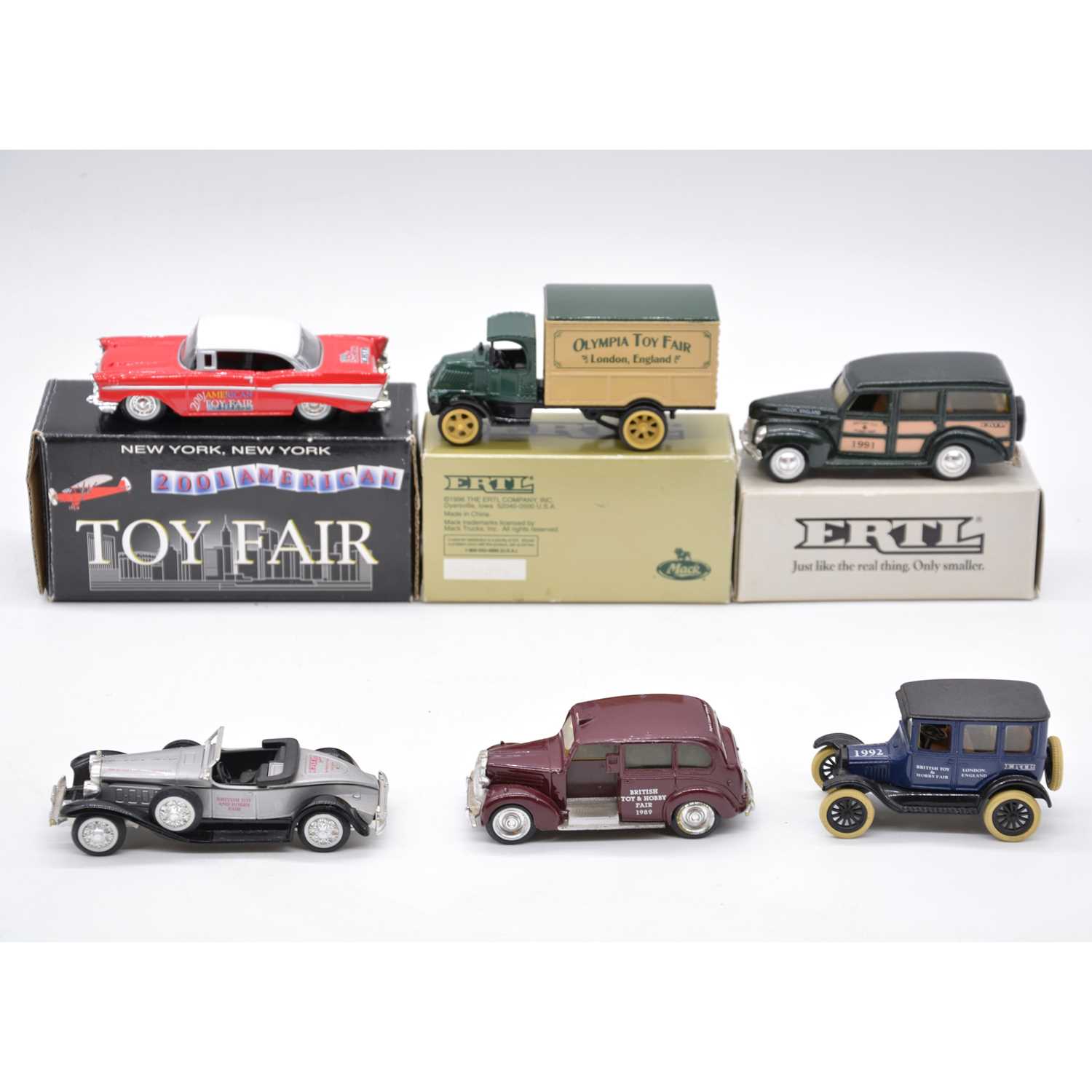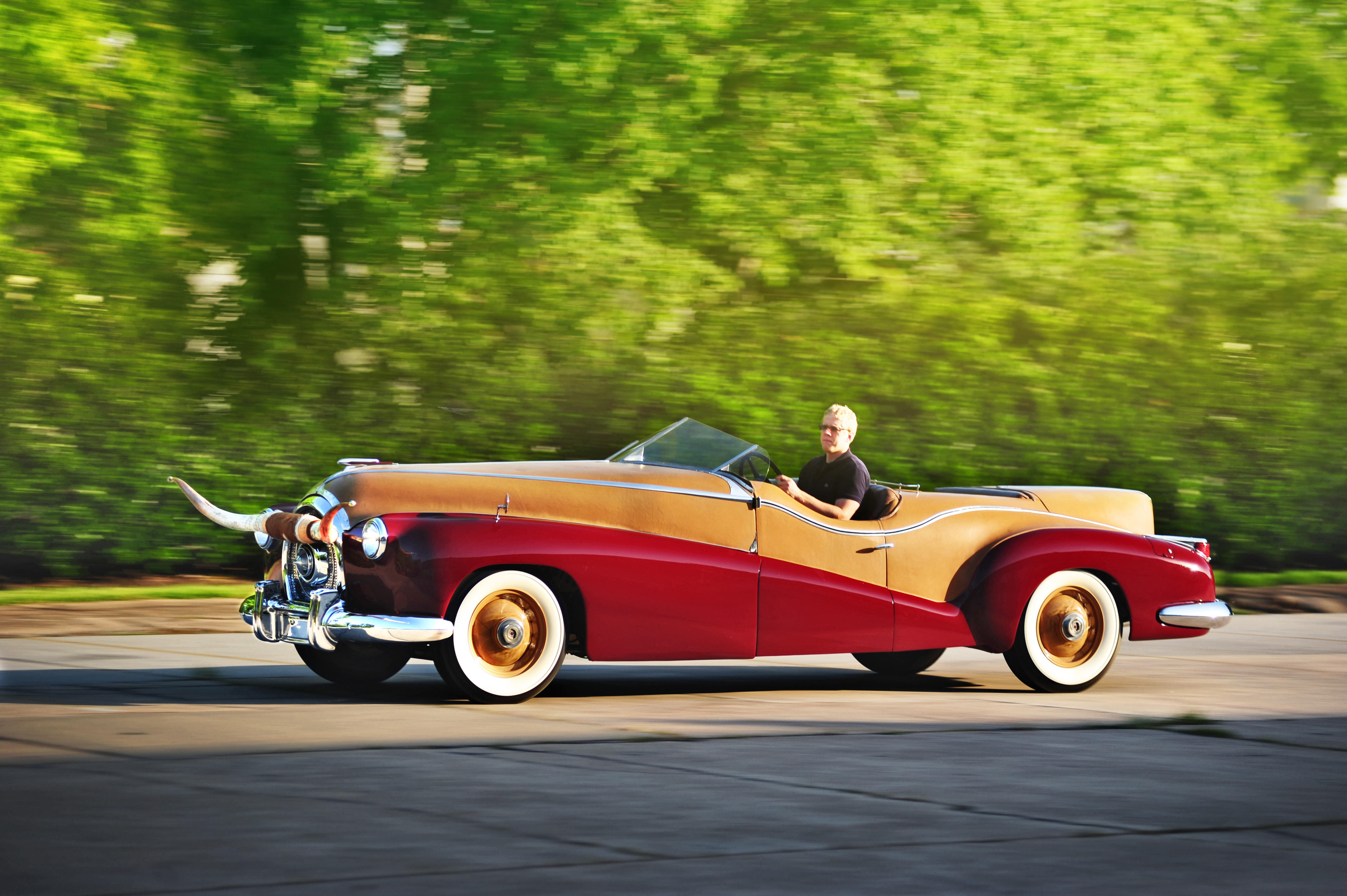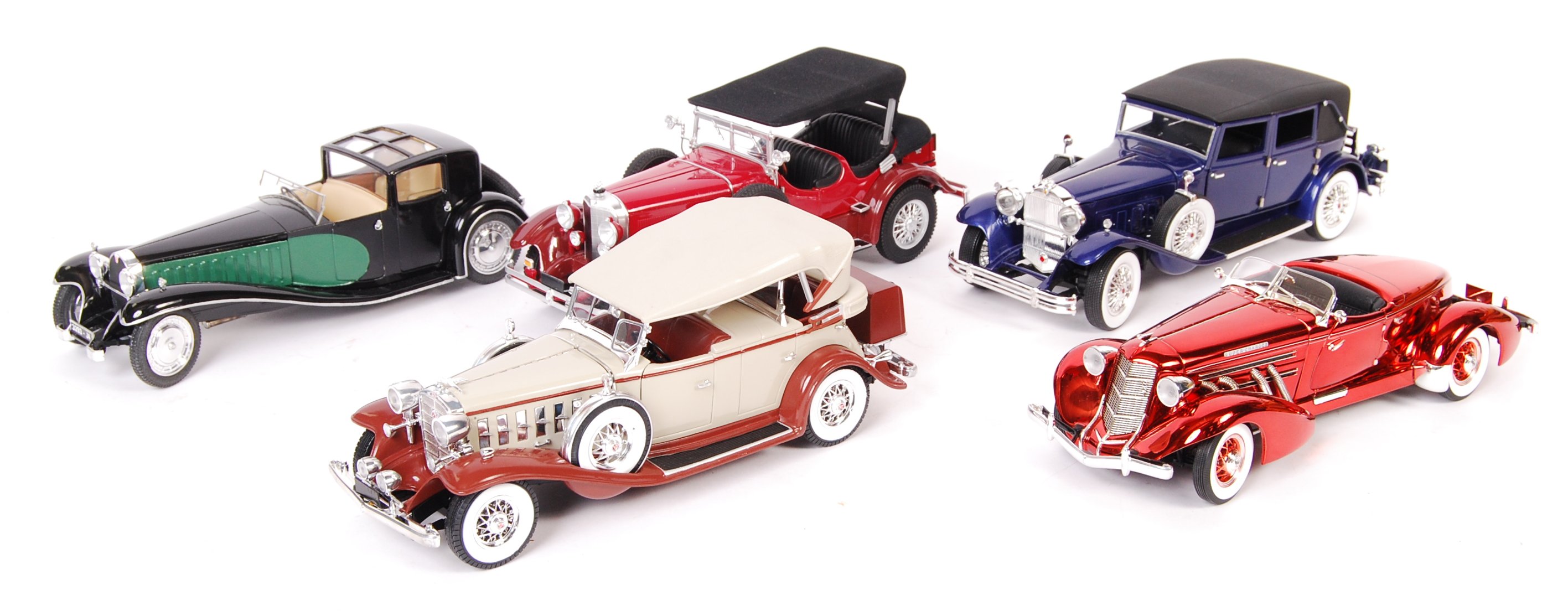1930 PACKARD 734 'BOATTAIL' SPEEDSTER RUNABOUT CUSTOM COACHWORK BY PACKARD Chassis No. 184084 Engine No. 184092 Body No. 442-23 Red with burgundy fenders, black leather interior and beige soft top Engine: straight eight, water cooled side valves, Detroit Lubricator dual throat carburetor, 384ci., 145bhp at 3,400rpm with high compression head 6.0:1 compression; Gearbox: four-speed manual; Suspension: front and rear semi-elliptic leaf springs; Brakes: finned drums all around. Left hand drive. In 1930 the Packard 734 'Boattail' Speedster Runabout was introduced to the American public. Within a short time, the car had become an ultimate classic and is now heralded by enthusiasts as one of the most valuable and special Packards ever built - a true classic American hot rod. It is believed that a mere thirty-nine of these high performance Runabouts were built. Today only eleven genuine examples remain. Coveted by their current owners for their stylish design, remarkable performance and limited number, they are well documented cars with clearly traced individual histories. A total of 113 Speedster chassis' were built, ranging in style from the sublime Phaetons, Sedans and Victorias to the racy Roadsters and Runabouts. The Speedster on offer here, as identified by its chassis and engine numbers, is one of the few genuine examples of the 734 Runabout production line. Created by the head of Packard engineering, Colonel Jesse Vincent, the Packard 734 was developed based on its predecessor, the 626. The Packard 626 was piloted to fame by 1923 Indy winner, Tommy Milton. Milton drove from Miami to Los Angeles at an impressive average speed of 50mph. The short wheelbase 626 featured a highly modified Super Eight engine and a one-off body devoid of fenders, wings, a windshield and lights. On the oval, the 626 recorded multiple lap speeds of over 110mph and on a straightaway, the 626 was recorded as having a top speed of 125mph. Despite the 626's awesome speed capabilities, it was far from becoming a public production car. It lacked the characteristic styling that embodied Packard design. Unhampered by any of this, Colonel Vincent, who was already known for his desire to propel his cars at almost ridiculous speeds, set out to put this car on the road any way he could. His uphill battle grew steeper with the introduction of the Cadillac V16 in 1930 because he knew he needed to introduce something as dynamic as the V16 to the buying public. With good perception and marketing savvy, he managed to convince the Packard executives that there was only one way to answer - with speed, and a whole lot of it. Satisfied with Vincent's proposal, the executives gave him the go-ahead and in 1930 the new 734 model line-up was introduced to the American public. Vincent created the 734 by utilizing both pre-existing technology and new engineering developments as well. The entire motor in fact, had been redesigned. The first change occurred with the cylinder block; the inlet and exhaust manifold had been altered from the standard vertical plane to a more practical hemispherical shaped design set at a 45 degree angle. It was practical because it utilized and maximized the larger openings to the manifolds, while also separating the exhaust and inlet manifolds to create a faster, larger capacity and free flowing system. A Detroit Lubricator dual throat updraft carburetor was also installed, as was a foot controlled muffler cut-out. Together with a piston designed vacuum pump and the buyer's choice of compression ratios, the new Packard Speedster Runabout was a virtual powerhouse, tailored and engineered to the owner's personal driving style. The asking price for the Packard 734 line ranged from $5,500 to $6,000 when new. Mr. Bruce Grinager has confirmed that the ancestry of this particular Speedster Runabout can be believably traced back to the 1930s. The first owner in 1930 was Halley McClure of Brooklyn, NY and there is a continued list of ownership history for th
1930 PACKARD 734 'BOATTAIL' SPEEDSTER RUNABOUT CUSTOM COACHWORK BY PACKARD Chassis No. 184084 Engine No. 184092 Body No. 442-23 Red with burgundy fenders, black leather interior and beige soft top Engine: straight eight, water cooled side valves, Detroit Lubricator dual throat carburetor, 384ci., 145bhp at 3,400rpm with high compression head 6.0:1 compression; Gearbox: four-speed manual; Suspension: front and rear semi-elliptic leaf springs; Brakes: finned drums all around. Left hand drive. In 1930 the Packard 734 'Boattail' Speedster Runabout was introduced to the American public. Within a short time, the car had become an ultimate classic and is now heralded by enthusiasts as one of the most valuable and special Packards ever built - a true classic American hot rod. It is believed that a mere thirty-nine of these high performance Runabouts were built. Today only eleven genuine examples remain. Coveted by their current owners for their stylish design, remarkable performance and limited number, they are well documented cars with clearly traced individual histories. A total of 113 Speedster chassis' were built, ranging in style from the sublime Phaetons, Sedans and Victorias to the racy Roadsters and Runabouts. The Speedster on offer here, as identified by its chassis and engine numbers, is one of the few genuine examples of the 734 Runabout production line. Created by the head of Packard engineering, Colonel Jesse Vincent, the Packard 734 was developed based on its predecessor, the 626. The Packard 626 was piloted to fame by 1923 Indy winner, Tommy Milton. Milton drove from Miami to Los Angeles at an impressive average speed of 50mph. The short wheelbase 626 featured a highly modified Super Eight engine and a one-off body devoid of fenders, wings, a windshield and lights. On the oval, the 626 recorded multiple lap speeds of over 110mph and on a straightaway, the 626 was recorded as having a top speed of 125mph. Despite the 626's awesome speed capabilities, it was far from becoming a public production car. It lacked the characteristic styling that embodied Packard design. Unhampered by any of this, Colonel Vincent, who was already known for his desire to propel his cars at almost ridiculous speeds, set out to put this car on the road any way he could. His uphill battle grew steeper with the introduction of the Cadillac V16 in 1930 because he knew he needed to introduce something as dynamic as the V16 to the buying public. With good perception and marketing savvy, he managed to convince the Packard executives that there was only one way to answer - with speed, and a whole lot of it. Satisfied with Vincent's proposal, the executives gave him the go-ahead and in 1930 the new 734 model line-up was introduced to the American public. Vincent created the 734 by utilizing both pre-existing technology and new engineering developments as well. The entire motor in fact, had been redesigned. The first change occurred with the cylinder block; the inlet and exhaust manifold had been altered from the standard vertical plane to a more practical hemispherical shaped design set at a 45 degree angle. It was practical because it utilized and maximized the larger openings to the manifolds, while also separating the exhaust and inlet manifolds to create a faster, larger capacity and free flowing system. A Detroit Lubricator dual throat updraft carburetor was also installed, as was a foot controlled muffler cut-out. Together with a piston designed vacuum pump and the buyer's choice of compression ratios, the new Packard Speedster Runabout was a virtual powerhouse, tailored and engineered to the owner's personal driving style. The asking price for the Packard 734 line ranged from $5,500 to $6,000 when new. Mr. Bruce Grinager has confirmed that the ancestry of this particular Speedster Runabout can be believably traced back to the 1930s. The first owner in 1930 was Halley McClure of Brooklyn, NY and there is a continued list of ownership history for th









Try LotSearch and its premium features for 7 days - without any costs!
Be notified automatically about new items in upcoming auctions.
Create an alert